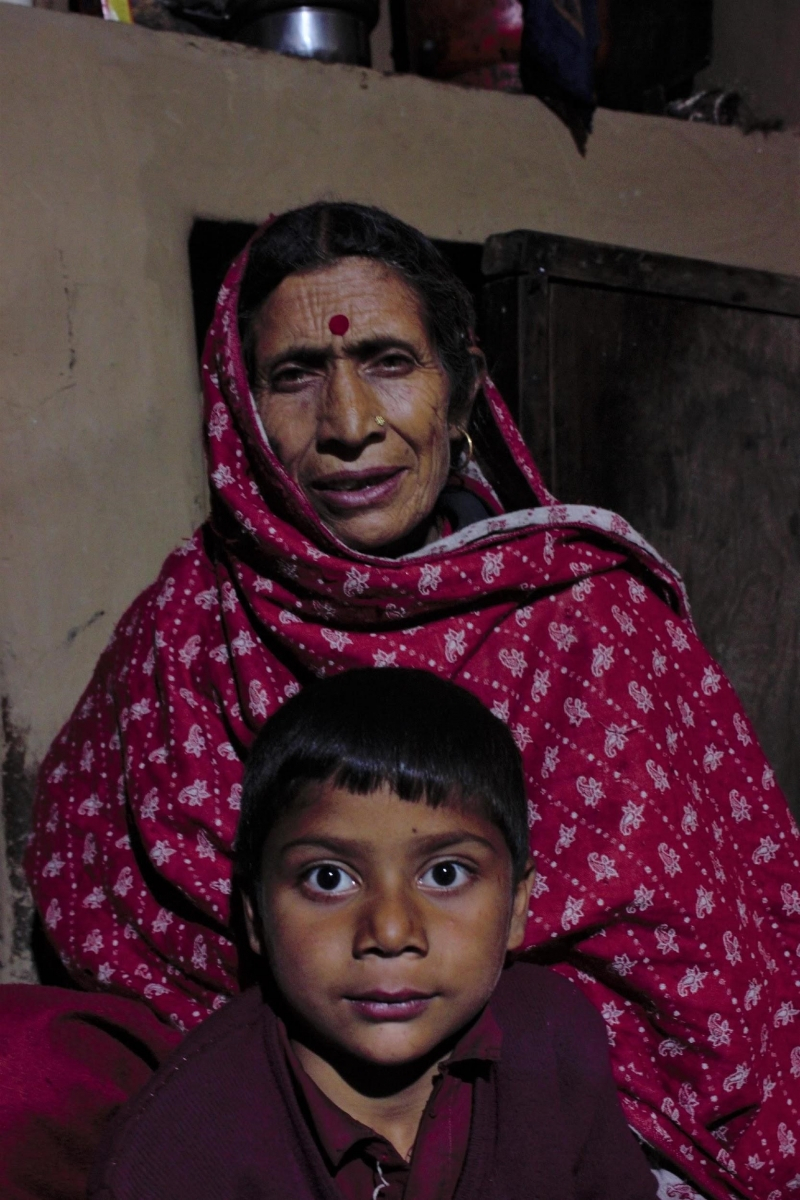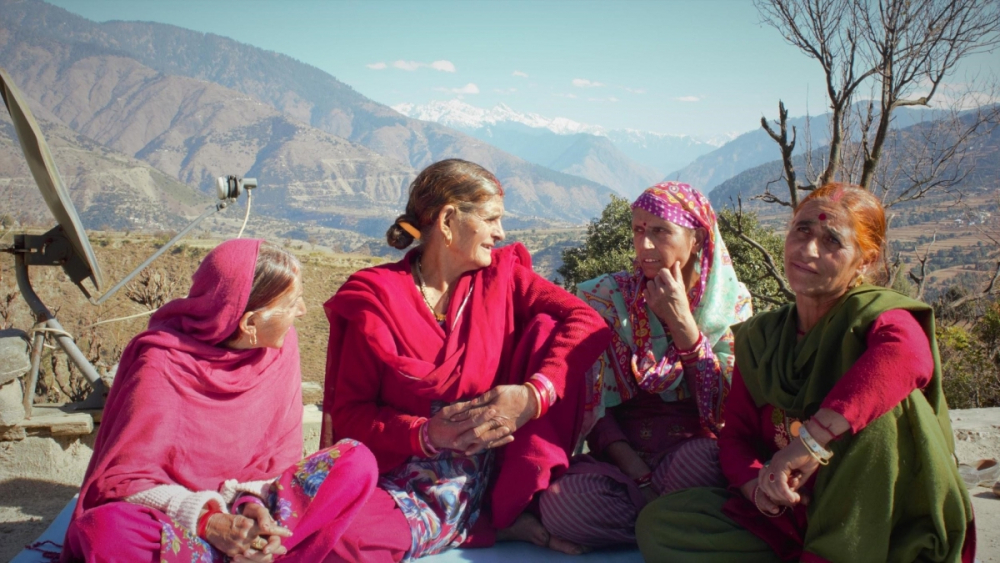Folk songs are songs transmitted orally from one generation to another. The texts of folk songs is not static, they change over time as they are recreated extemporaneously by successive generations of singers; however, the melody remains constant and undergoes very little change over time. Folk songs express very basic emotions or shared ideals of a community that are both personal and universal. The authorship of folk songs is either lost or forgotten, and they embody the collective belief system of the community in which they originate. Folk songs depict the same locale in which they operate and follow simple patterns of rhythm and tone to work as mnemonic devices. The purpose of folk songs is not entertainment but to make sense of the social setting and embody emotions and feelings that are common to the community. Folk songs, like all other variants of folklore, can be regarded as a social document to understand the dynamics of society in which they function. In this article, I will list various genres of folk songs in the Siraz region in Jammu & Kashmir, and provide a survey of their context as well as content.
Sarazi folk songs depict the community life of Sarazi people very minutely. Nature features predominantly in the folk songs of Saraz and the imagery of nature is used to convey personal matters of the community. The people of Saraz are pastoralists. They move to higher pasturelands to graze their animals in summers and come down to lower altitudes during winters. When the herdsmen and women are away from their home grazing the animals, they sing ghati and chun.
Folk performer Bhagat Singh Rana confirms that ghati is the most authentic and primary genre of Sarazi. Ghatis are numerous couplets of double entendre joined together to create a long sequence that depicts local way of life. Wit and sarcasm are the chief ingredients of ghati and it employs natural imagery as metaphors to mediate its message. Ghati features numerous themes in one song and serves a didactic role in the Sarazi community. Each couplet in ghati is complete in itself. These couplets are also sung in isolation; however, mostly they form a chain with other ghatis to create a longer sequence. The double entendre has a direct meaning steeped in the surrounding sociocultural setting and an indirect meaning that serves as moral commentary for Sirazi people. Here is the link to listen to a Sarazi ghati: https://www.sahapedia.org/songs-of-saraz-region-ghati
Chun in Sarazi means lover and is a quatrain that deals mostly with the musings of a lover. Numerous quatrains known as chun are linked together to create a complete song that treats only one theme, i.e., the pangs of love. Bhagat Singh Rana admits that while this genre primarily depicts the musings of lovelorn couples, it also features a commentary on interpersonal relations.

Fig. 1: Folk performer and Sirazi writer Bhagat Singh Rana
Soju is a work song that is sung while working in fields. Corn is the main crop in this region, so soju is sung primarily while working in cornfields. Different rhythms are used to facilitate work movements in cornfields like sowing, weeding, and reaping. Sung mostly by women, these songs work as a call to keep people involved in the work in field. (Here is the link for Sarazi soju song: https://www.sahapedia.org/songs-of-saraz-region-soju-laanaa-lachchhiye)
Sithni is a multilingual song that is sung during marriages. These songs employ languages of nearby areas like Dogri, Urdu, and Bhaderwahi, and Chambyali along with Sarazi. The songs are designed differently for the bride and groom’s side. Sithanis talk about the rituals in marriages and are sung in the background while various marriage rituals are performed. (Here is the link for Sarazi sithni song: https://www.sahapedia.org/songs-of-saraz-region-puchhaande-puchhaande-sithni)

Fig. 2: Anaroo Devi sitting in her kitchen with her grandson
Gurai is sung during the weeklong celebration of Holi in Siraz. Shankar Nath Jogi, a folk performer, informs that these songs are meant for invoking various deities of the Hindu pantheon as well as the local naag devatas (snake gods). Sung only by women, these songs freely borrow words from other languages of the Jammu region, predominant of which is Dogri. Structurally, gurai progresses in dialogue form between two parties of women who narrate events from the lives of the deities they worship.
Hosaras are dancing songs sung to create rhythm while dancing kud, the local dance of the Jammu region. These songs are highly rhythmic in nature and are sung by zestful men during Holi while dancing. Two group of dancing parties join each other to sing these songs. One group of the dancing party sings hosara, which is then followed by the second group and so on in succession. Only men sing hosaras to facilitate rhythmic dancing to the sound of dhonse, which is a percussion instrument of local origin.

Fig. 3: Folk performer Parvati Devi
Anjuali are religious songs sung during khadaal or ganchakkar, both of which are ritualistic gatherings in honour of Lord Shiva. These songs honour Lord Shiva in his various manifestations and depict the relationship of Lord Shiva and Mata Parvati. One of the major themes of these songs is the hardships that Goddess Parvati went through to appease Shiva. Sarazi writer Jagdish Chandra Sharma informs that the imagery in anjuali is woven around the belief system associated with the Manimahesh Kailash in Chamba region of Himachal Pradesh, which is a seat of Shiva in local legends. While anjualis plays a crucial role in the belief system of Saraz, Bhagat Singh Rana explains that the language used in these songs is not purely Sarazi, but a mix of Sarazi and Gaddi language spoken by the Gaddis of Chamba region.
Sarazi people, who belong to Hindus of all castes in the region, have initiation ceremonies for boys which is a major event for any family. A song called janeu that lists the relationship of the boy with various direct or indirect relatives accompanies this initiation ceremony. As the relatives come forward to perform the rituals in the ceremony one by one, women sing these songs to invoke their relationship with the boy.

Fig. 4: A group of women recollecting songs
Sarazi folk songs draw the majority of their themes from its agriculturalist-pastoralist economy. Grazing of cattle in faraway places comes with its own hardships and these hardships provide a lot of thematic material to the folk songs, especially in the case of ghatis. The songs depict the moods of the shepherds away from home with their herds, with a number of the songs featuring news of their safety. The importance of the crops of corn, barley, paddy and red kidney beans find prominent mention and are celebrated by the Sarazi people in their folk songs.
As cultivable land is sparse and irrigation inefficient, Sirazi people regard highly whatever little they can grow in their lands. They take up the subject of cultivation of crops often to weave narratives around the sowing, reaping and processing of crops, and juxtapose this with events of everyday life to serve as commentary on the social life of the people of the community. All sorts of local shrubs, the fruit they bear along with the flowers that grow locally, find space in the songs. Birds and animals, especially sheep, are also major motifs that keeps recurring. The process of cutting and collecting hay for winters after monsoon is another subject that finds elaborate treatment in the.
Jatras or fairs, which typically happen in the month of July and August all over Saraz, also supply thematic content to Sarazi folk songs. Often songs depict the rituals of the jatra and talk about the journeys people undertake during the event. (Here is the link to a song on the jatra to Manimahesh in Chamba, Himachal Pradesh: https://www.sahapedia.org/songs-of-saraz-region-jay-jay-bhole-baba)
Nature features in its various manifestations in the folk songs of Saraz. The folk performer regards the high meadows in awe for their pristine beauty and celebrates them for the fodder they provide to graze cattle. Water springs find a pride of place in the songs. As the way of life in Saraz once was predominantly pastoral, Sarazi folk songs celebrate the theme of nomadism. Songs are often directed at people pleading them to stay for a little longer. Few songs, especially chun, employ the trope of a lover asking another to return the favour, as he or she might have to go away sooner.
Multilingualism is a reality of the verbal folklore in Saraz. While most songs employ vocabulary from a multitude of languages spoken in nearby areas, the verbal folklore in Saraz remains Sirazi in its ethos. The folk songs depict the past and present of the people of Siraz and offer ethnographic insights into their lives. They provide a window to peek into the Sarazi way of life and understand their relation with nature as well as each other.












